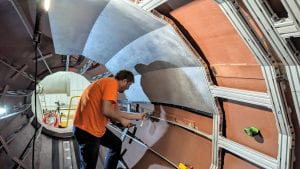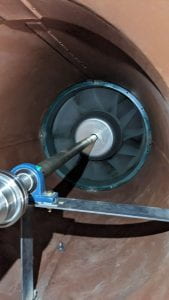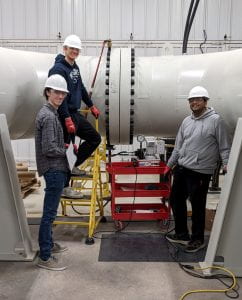Graduate students from the Miller Lab presented their ongoing research at the 2025 TIM Fluids conference, held from April 25-27 in Gananoque, Canada. Presentation titles are listed below:
- Yeain Han – Performance of a Marine Propeller at High Reynolds Numbers Using a Compressed-Air Wind Tunnel
- Alex Scheffler-Murry – Aerodynamic Scaling of Coaxial Rotor Performance
- Colby Medina – Background Oriented Schlieren for Tip Vortex Visualization in Compressed-Air
You can find more information and download the abstracts here: https://timfluids.ca/






